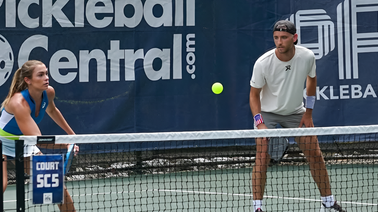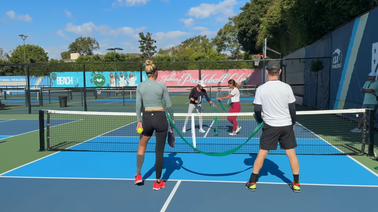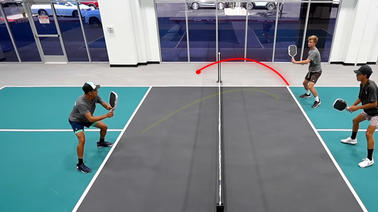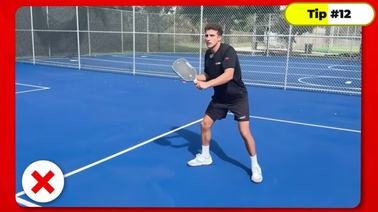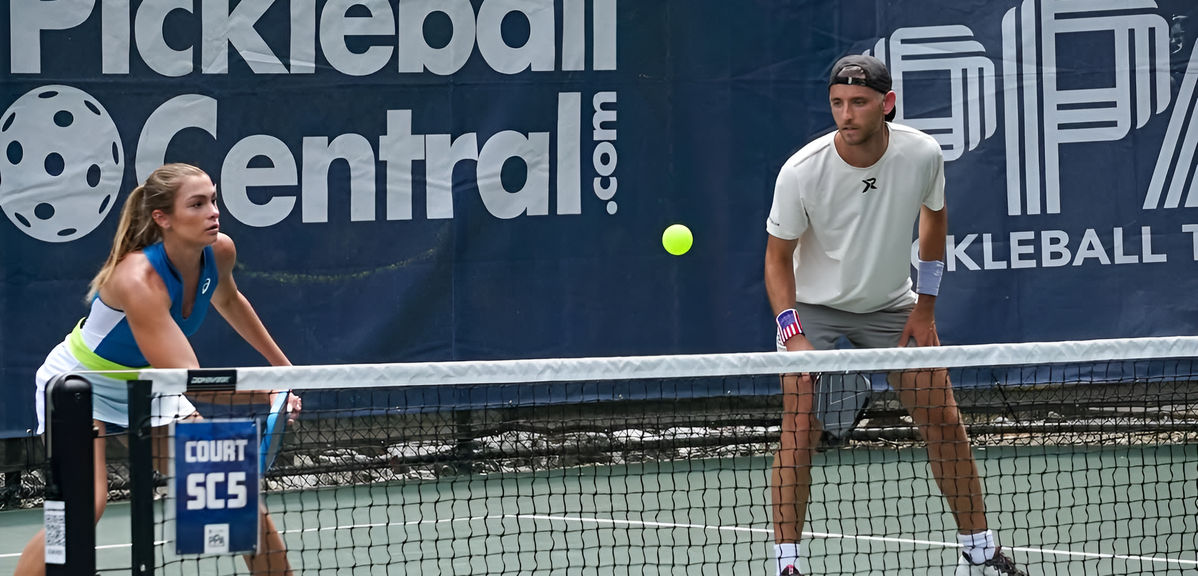
Pickleball is special because players of all skill levels can play a game and still have fun. But when you're paired with a particularly weaker partner, they can often get targeted on the majority of shots, leaving you scrambling against the putaways.
Here are a few ways you can prevent your weaker partner from being constantly targeted or set up to fail.
1. Get Them to the Kitchen... Fast!
The first key to help relieve your weaker partner from getting isolated is to help them get to the Kitchen.
Unless they're a former tennis player who loves to hit hard from the baseline, most weaker players will perform better up at the net, as it’s harder for your opponents to attack without making more errors.
The main thing to focus on is after serving: cover the middle. Communicate with your partner that you are going to come over to the middle from your side (regardless of which side you are on) to take thirds and fifths.
This frees your partner up to start inching closer to the Kitchen. If your weaker partner is hitting most thirds and fifths, this will keep them pinned back towards the baseline. As the weaker player, their drops and resets won’t be as effective, and your team will struggle to reach the Kitchen and create a neutral point.
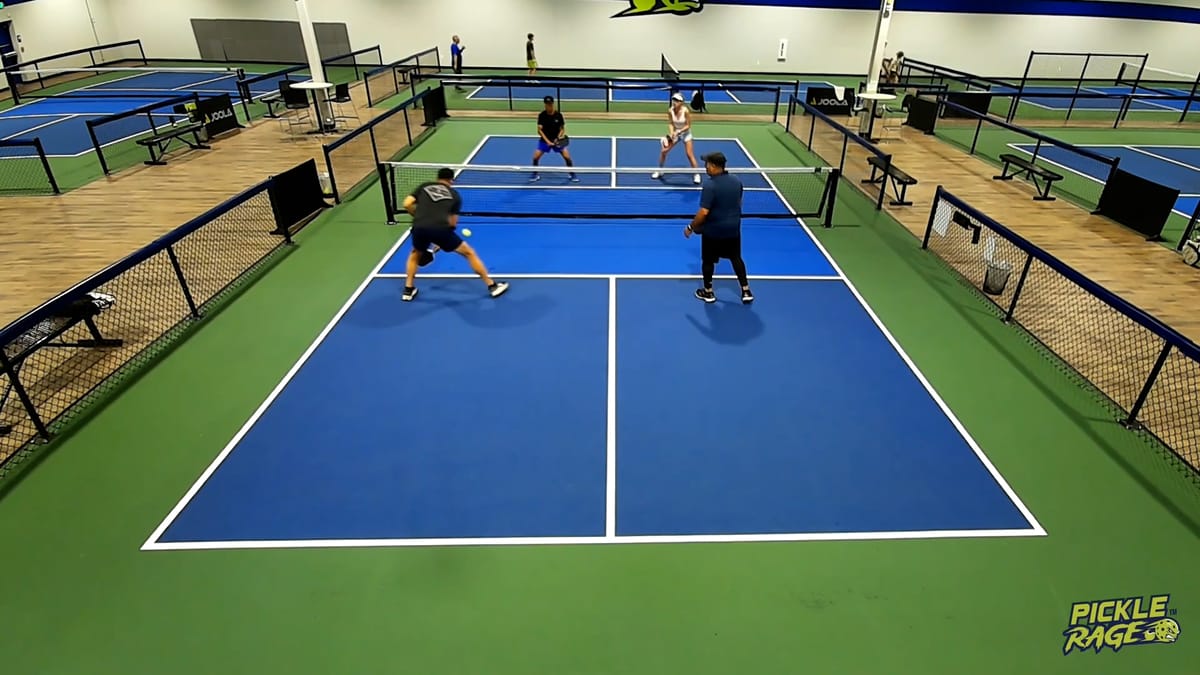
2. Serve Smart to Avoid Targeting
Worries that your opponents will return every serve to your partner? There's a fix.
First, serve bigger where possible. Second, find your opponents’ weaker side. Few players, especially at the beginner level, hit their backhand and forehand equally. Test both sides to discover which is weaker and serve there. This will prevent them from easily targeting your partner with the return.
Your goal: force neutral or middle returns. That’s your zone now. Take it.

3. Control The Dinking Patterns
Now that you have a tactic to help your partner get to the Kitchen, the next step to avoid them getting trapped in a cross-court dink battle.
The same rule as before applies here: the middle is yours for the taking. So, how do you get your opponents to dink to the middle?
Tell your partner to try to dink the ball middle as much as possible, or closer to the line. Avoid directly down the line as it decreases their margin for error and opens up the opportunity for an ernie.
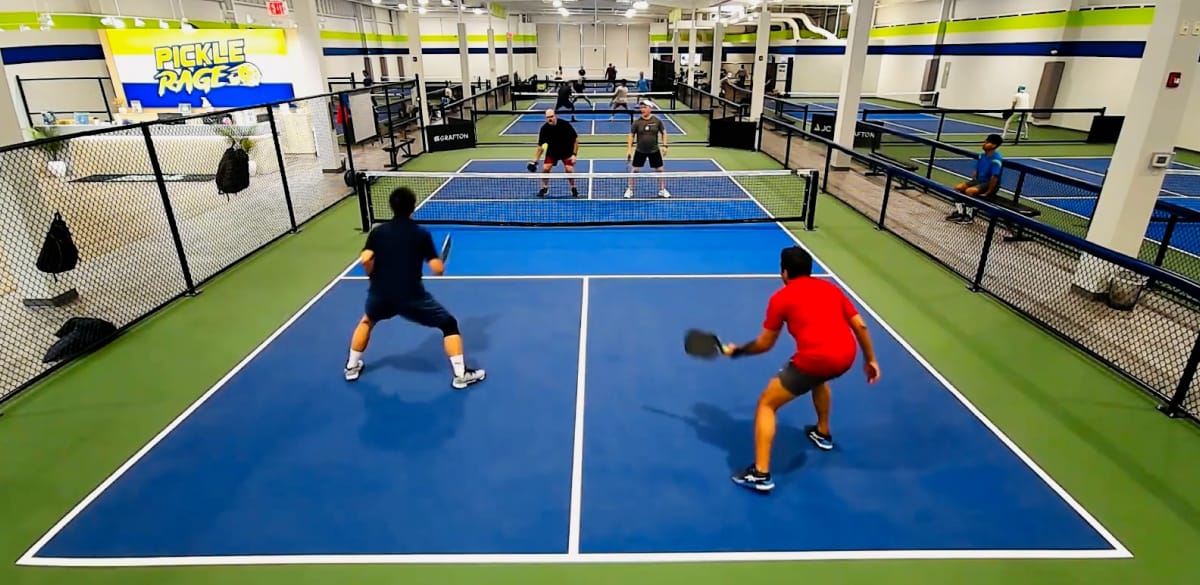
If they can get the ball to the middle, it will make it harder for your opponents to continue isolating them with cross-court dinks, and you should get a middle ball.
If you are in control of the dink rally, it is very important to keep the dink rally cross-court or to the middle. Going down the line will just enable your opponents to start the dink rally crosscourt with your weaker partner, which is obviously what we are trying to avoid.
So, get your partner to try to redirect out of the crosscourt dink rally, and as the stronger partner, stay in the crosscourt dink rally to keep your partner from being isolated.
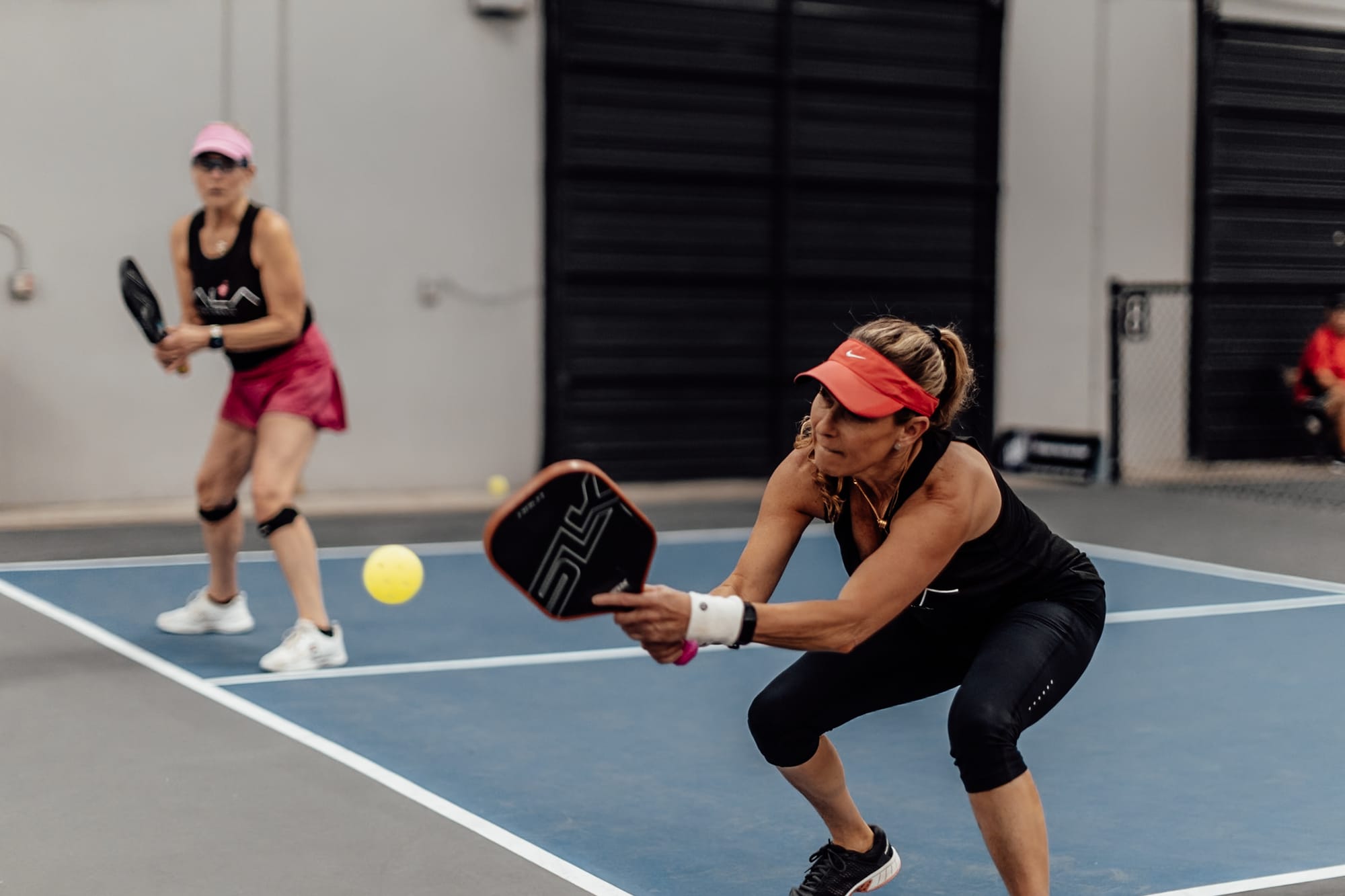
Player Smarter, not Harder
Decision-making on shots is important regardless of how good your partner is, but it becomes even more important when your partner is weaker.
4. Smarter Third Shots
First, if you are trying to get your partner to the Kitchen, hitting a massive drive on the third shot is probably not smart. Not only does it reduce the time for your partner to get to the Kitchen, it's also a lower percentage shot. If you fail to keep it low, your opponents can smash a high drive right back to your weaker partner, forcing them to hit the fifth shot under pressure.
A strong drop to the middle of the court is a much smarter decision and will at least give your team a chance at making the fifth and reaching the Kitchen.
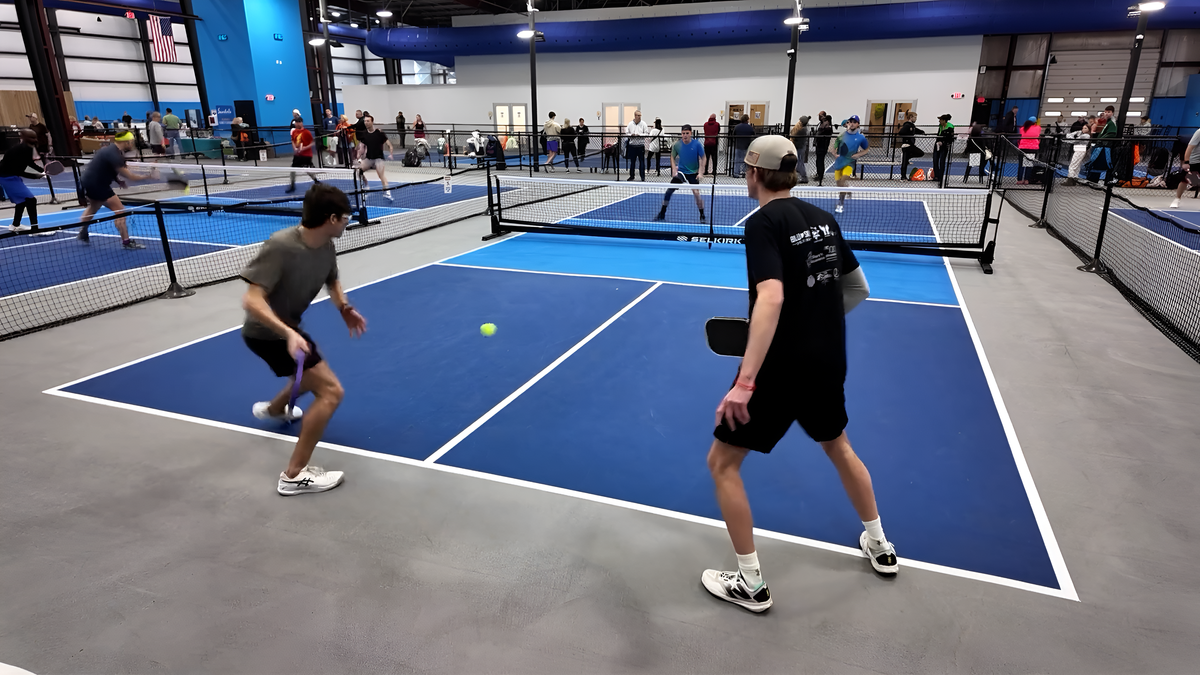
5. Stay Patient at The Kitchen
Similarly, decision-making at the Kitchen is crucial when helping a weaker partner. Instead of switching a cross-court dinking rally that you are in command of, stay in it as long as possible and move your dinks between cross-court and middle to help get a pop-up.
Avoid just pulling the trigger and speeding the ball up, unless you think your partner is going to miss one of the next few shots. Reckless speedups are the easiest way to get your weaker partner killed, which will further hurt their confidence. Support your weaker partner by working the point and setting them up to get a rhythm and have easier shots to hit.
6. Keep Serves & Returns Deep
Depending on the situation, it may be worth serving bigger when you have a weaker partner. Preventing your opponents from hammering returns at your partner is worth the risk of serving bigger and maybe missing a few serves.
The same goes for returning. You are more likely to get weaker thirds from your opponents if you can consistently hit your returns deeper. Without missing a ton, it might be worth the decision to go for more on those shots.
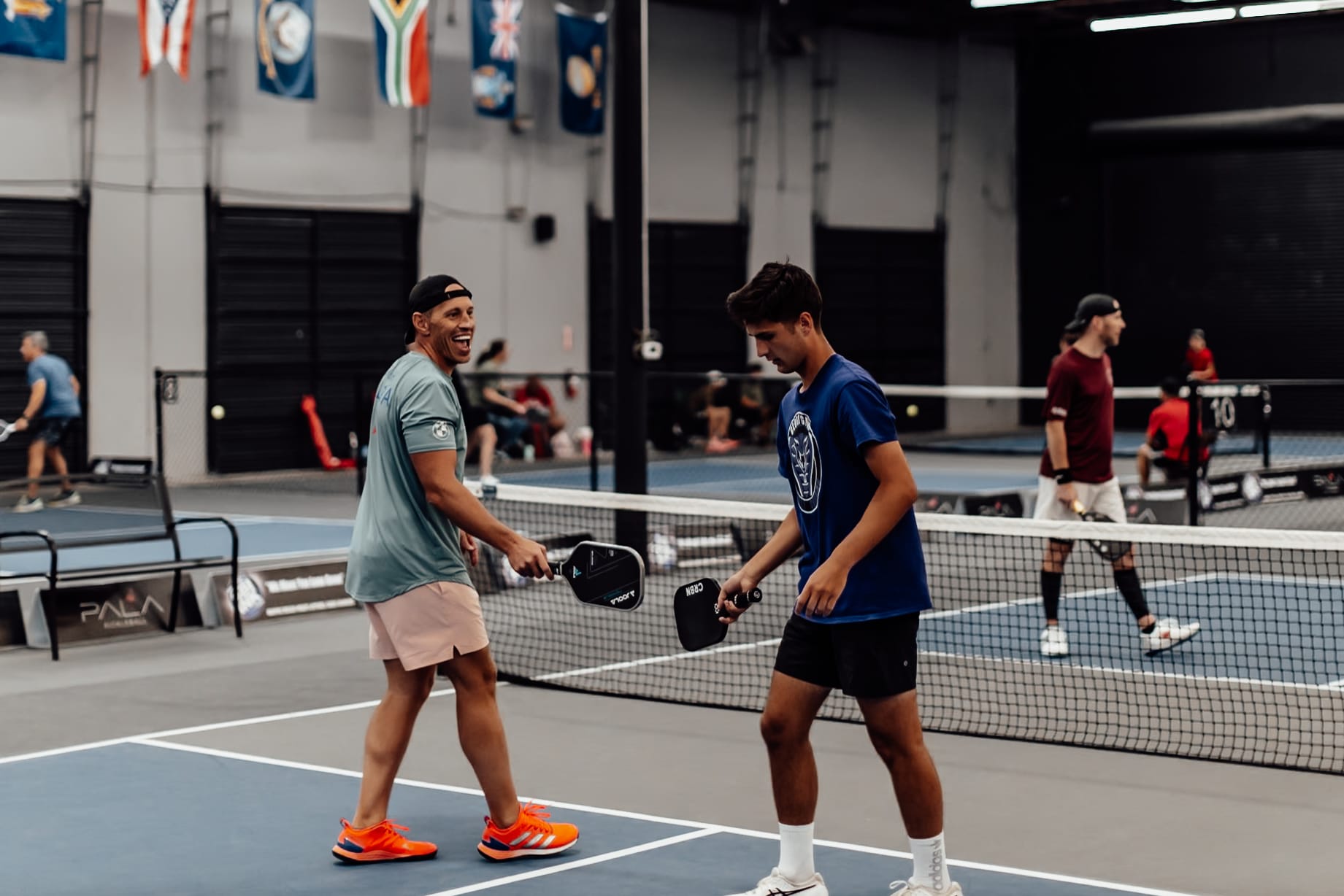
7. Finally: Keep Them Motivated
When you’re the stronger player, you're not just managing tactics, you’re managing psychology.
A weaker partner already knows they’re the weaker link, and that pressure can spiral quickly. One missed return, one popped-up dink, and suddenly they’re in their own head. That’s when mistakes compound. So keep it light. High-five them after good shots. Encourage them after misses. A confident partner, even if less skilled, plays way better than a tense, discouraged one. Your attitude sets the tone, make sure it’s one that keeps them in the fight.
All in all, your decision-making must be spot on when playing with someone weaker in order to give your team the best chance to succeed. If you are failing to get to the Kitchen consistently or your opponent is getting isolated easily, remember these tips to help even the playing field.
Thanks for reading, and be on the lookout for the next article. Enjoy the grind, and remember, you can’t dink all day if you don’t start in the morning.

Eric Roddy
Eric is a PPA tour pro living in Charlotte, NC, sponsored by PROXR. In addition to playing PPA events, he teaches pickleball 2-3 hours a week, enjoys golf, and listening to his favorite band Goose.
Love Pickleball? Join 100k+ readers for free weekly tips, news & gear deals.
Subscribe to The DinkGet 15% off pickleball gear at Midwest Raquet Sports





